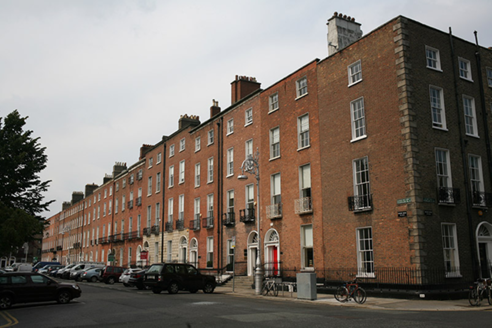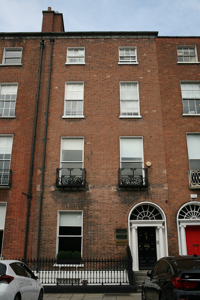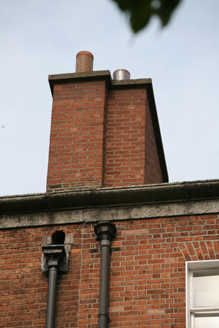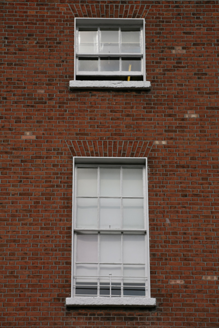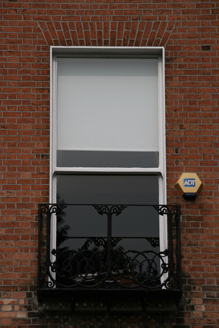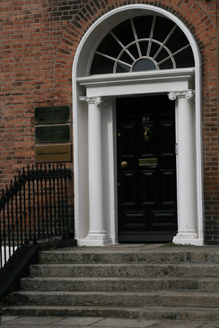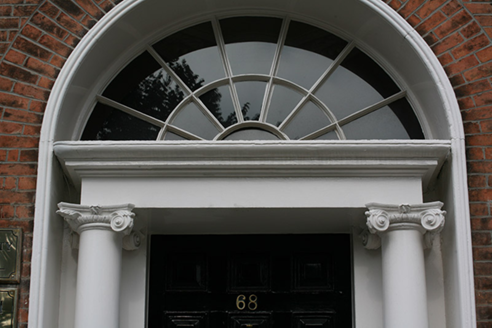Survey Data
Reg No
50930079
Rating
Regional
Categories of Special Interest
Architectural, Artistic
Original Use
House
In Use As
Office
Date
1810 - 1830
Coordinates
316570, 233112
Date Recorded
09/09/2015
Date Updated
--/--/--
Description
Terraced two-bay four-storey over basement former townhouse, built c. 1820 as one of a pair, with full-height return to rear (north). Now in use as offices. Double-pile slate roof, hipped to east, set behind parapet wall with moulded granite coping and frieze, cast-iron hopper and plastic downpipe breaking through to west. Replacement red brick chimneystack to west party wall with glazed pots. Red brick walls laid in Flemish bond with cement pointing and granite plinth course over rendered basement wall. Gauged brick square-headed window openings with granite sills, patent reveals and timber sash windows; original three-over-three to third floor, original six-over-six to second floor, early-twentieth century one-over-one to ground and first floors and replacement eight-over-eight to basement with granite surround and metal grille affixed. Replacement granite sills and replacement decorative cast-iron balconettes to first floor. Gauged brick round-headed door opening with masonry Ionic doorcase comprising square-headed door opening flanked by Ionic columns supporting lintel entablature with original spoked fanlight. Original timber panelled door with eleven raised-and-fielded panels and brass door furniture opening onto shared granite platform and granite steps to street. Platform and basement enclosed by original decorative wrought- and cast-iron railings set on granite plinth wall. Forming part of a continuous terrace of former townhouses lining north side of Fitzwilliam Square.
Appraisal
A former townhouse, built as a pair with No. 67 (50930080), it retains a wealth of original fabric including the handsome doorcase and some historic timber sash windows. It retains its original external appearance and contributes to the traditional character of the square and the wider south Georgian core. Casey (2005) mentions an eagle centrepiece in the entrance hall. Similar feature in Nos. 7,10,41 and 60. Laid out in 1791 by the surveyors J & P Roe, Fitzwilliam Square was the last of the city’s Georgian squares to be completed. Development was staggered and progressed slowly until after the Napoleonic Wars.
